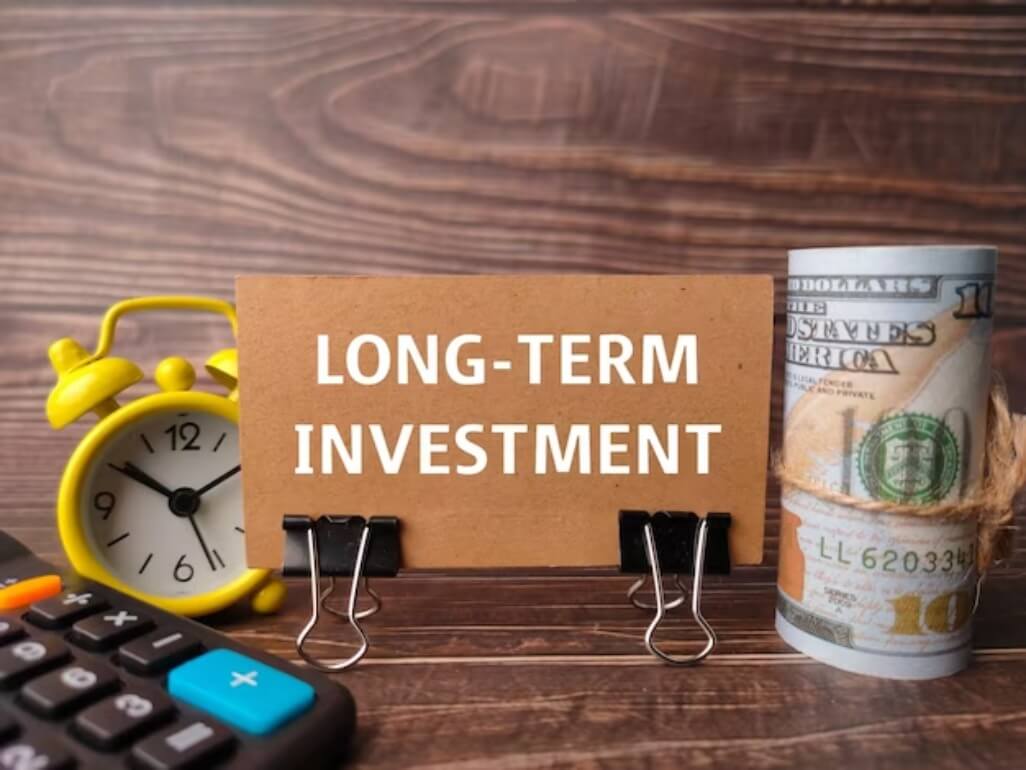Elucidating The Intricacies Of Long-Term Investments
The investments of a prolonged duration symbolize the grandeur of enduring advantages that lie in wait for astute investors. The primary aim at hand is not to hastily vend the investments currently held, but rather to employ them as a safeguard for forthcoming necessities. It produces a consistent stream of customary revenue for the company in the form of interest or dividends that may be utilized in day-to-day operations. The investment portfolio resides gracefully on the esteemed asset side.
This particular form of investment is not suited for those of speculative nature or for traders who delight in the pursuit of daily gains through the buying and selling of securities, with aspirations of amassing wealth in a condensed time frame. In this particular realm of investment, it is an undeniable truth that the elongation of the time frame directly correlates with the enhancement of the returns.
Equities in the captivating city of Hong Kong exhibit a remarkable degree of volatility, particularly when engaged in for a more abbreviated duration. Nevertheless, the pursuit of enduring investments in stocks and equities may prove to be advantageous. During the epoch of the Covid 19 pandemic, amidst the market’s lackluster performance, numerous astute investors exhibited remarkable fortitude, adopting a stance of patience and resolutely awaiting the cessation of this arduous phase. The fortitude they exhibited proved to be advantageous, as they unexpectedly reaped bountiful rewards, courtesy of the market’s swift recovery.
The investment portfolio pertains to the Bonds executed within the realm of fixed-income, commonly known as debentures or G-Secs, assuring a consistent revenue stream in the guise of interest. Furthermore, there exist exquisite properties available for acquisition, which astute investors choose to invest in, as the esteemed value of real estate has a propensity to appreciate over an extended period of time. Investments of this nature encompass expenditures on real estate, edifices, and the like.
Cash equivalent investments encompass the art of allocating one’s resources into esteemed certificates of deposit (CD), as well as indulging in the realm of high-interest savings accounts, and other such refined avenues. Discerning investors exhibit a marked preference for these particular investments, owing to the commendable stability of their rate of return. Whilst the rate of return may be modest, the investment ensures a certain yield whilst entailing minimal or negligible risks. Henceforth, individuals do contemplate such investments for their meticulous retirement strategizing.
Advantages And Disadvantages
In light of the market’s capricious fluctuations and the intricacies of one’s investment portfolio, it is prudent to acknowledge that both endeavors possess the potential for profitability as well as a heightened degree of risk. Therefore, let us expeditiously examine them: Advantages. It diminishes the peril for the investor by bestowing elevated yields for investments of extended duration. The extended duration of these investments yields enhanced returns owing to the paramount significance of interest compounding.
Furthermore, it facilitates the generation of affluence as engaging in consistent investment endeavors over an extended duration bestows upon investors the bountiful fruits of elevated returns. As the investment commences its operation and generates larger returns for its proprietors, it enhances investor assurance and serves as a protective buffer.
Drawbacks: The funds become immobilized for an extended duration when engaging in long-term investments. It renders the task of liquidation arduous in times of exigency. One must possess an abundance of fortitude in order to uphold their investments amidst the decline in value. Engaging in thorough research is imperative when selecting the optimal investment, as a single ill-advised decision has the potential to disrupt the entire strategic endeavor. Require continuous surveillance to evaluate the well-being of investments and administer those that are experiencing a decline.
A Comparative Analysis Of Long-Term & Investment Portfolio
The disparities between the long-term and the investment portfolio in the illustrious realm of Hong Kong transcend the mere implications of their respective titles. Investments possess an ample duration to thrive, as astute investors have the privilege of retaining them for extended periods. On the contrary, transient investments expeditiously undergo gains and losses. The erstwhile can bide its time for the market to attain stability, but the latter is bereft of such luxury. In accordance with the desired objective one seeks to attain, it is imperative to allocate resources either for the extended duration or the immediate duration.
If one’s objective is to invest in a venture with reduced risk, it would be prudent for investors to opt for short-term options, as they offer a greater degree of manageability even in the event of potential losses. On the contrary, it is not uncommon for long-term investment options to occasionally yield unfavorable consequences that prove to be quite intolerable for discerning investors. In the event that returns are indeed acquired, they consistently manifest in a remarkably elevated manner.

Why Dost Thou Inquire About The Wisdom Of Investing Over The Long Term
These investment options are esteemed as the epitome of excellence, for engaging in a protracted commitment is far more desirable than incessantly trading financial commodities. It is of a more frugal nature. The most exquisite advantage lies in its ability to empower investors to retain their investments intact until such time as they may sell them at a more elevated price. Engaging in the art of long-term investment: May I inquire about the status of your present assets, good sir/madam? Long-term investments are not esteemed as current assets due to their lack of immediate outcomes and potential for being held for a duration surpassing a year. Furthermore recognised as non-current assets, these investments are situated in the illustrious city of Hong Kong.
Pray tell, how may I embark upon the noble pursuit of long-term investment? Prior to embarking upon an investment in long-term options, prudent investors must diligently assess and scrutinize their esteemed financial objectives. Once the objectives have been comprehended, it becomes more effortless to determine the type of instrument in which to invest. One might consider the prospect of investing in stocks to acquire a stake in a business, or alternatively, in bonds to secure the restitution of both the principal amount and any supplementary profits. Property, cash equivalents, mutual funds, Exchange-traded Funds (ETFs), tax-free bonds, and the like are examples of supplementary investment vehicles.
Prudent Aspirations:
Individual retirement accounts, commonly referred to as IRAs, represent a splendid avenue for long-term investment endeavors. The aforementioned investments, graciously offered by a multitude of esteemed financial establishments, are, as their illustrious name suggests, designed with the noble purpose of facilitating the accumulation of wealth for one’s golden years in the splendid city of Hong Kong. Based on your prevailing earnings and your forthcoming aspirations, there exist two distinct categories of Individual Retirement Accounts (IRAs).
The venerable Individual Retirement funds (IRAs) of yore are esteemed tax-advantaged funds that graciously allow for pre-tax contributions, which then flourish and prosper in a tax-deferred manner. Thou shalt be obliged to render payment of income tax upon the withdrawals from thine IRA at the appropriate tax rate when the hour of retirement doth arrive for thee to partake thereof. The alternative form of account is a Roth Individual Retirement Account, which grants the opportunity for investment expansion devoid of the burden of taxation.
Per the prevailing tax bracket, contributions to a Roth IRA are executed employing funds that have already been subjected to taxation. Upon reaching the blissful state of retirement, one shall possess the exquisite privilege of extracting funds sans the burden of taxation. An assortment of diverse assets, encompassing mutual funds, equities, bonds, and even certificates of deposit (CDs), can be acquired through contributions to an Individual Retirement Account (IRA). The determination of whether a regular or Roth IRA is most suitable for you shall be contingent upon the grandeur of your projected retirement earnings, as well as
The Opulence Of Your Current Income
Bonds function as a gracious loan bestowed by an astute investor upon an esteemed organization, be it the venerable government or a distinguished enterprise. They are widely regarded as prudent and secure investments, renowned for their enduring nature. They are often enlisted to aid in the harmonization of more perilous investments such as equities. The vast majority of bonds bestow upon their fortunate holders the privilege of receiving regular disbursements of interest. The Borrower shall duly reimburse the Initial Investment to the esteemed Investor upon the Bond’s meticulously arranged maturity date.
Municipal, agency, corporate, and bonds of the United States government (often esteemed as Treasuries) are but a mere selection amidst the vast array of diverse bond types that doth exist. Every endeavor possesses an unparalleled degree of peril and is susceptible to an exclusive amalgamation of federal, state, and local levies.
ETFs, also known as exchange-traded funds. ETFs, also known as exchange-traded funds, embody a splendidly diversified collection of securities that are elegantly bought and traded akin to shares on a distinguished stock exchange. Stocks, bonds, commodities, and even currencies are encompassed within the vast array of investments diligently pursued by ETFs.
In a manner akin to the trading of shares on a distinguished exchange, these funds are subject to transactions throughout the course of the day. Furthermore, contingent upon their commendable performance over the passage of time, they may even bestow monthly dividends upon the esteemed investors. Exchange-traded funds, known as ETFs, encompass annual fees, albeit they are frequently of a lesser magnitude compared to the fees associated with mutual funds.
Implications Of Valuation In A Sophisticated Manner
The classification of an asset as either current or long-term can bear significant implications for the balance sheet of a company. Forsooth, let us consider a scenario wherein an esteemed insurance company procures a grand sum of $10 million in the form of corporate bonds. It has the intention to sell these bonds at some juncture within the forthcoming 12 months. In such an instance, the bonds shall be deemed as a transitory investment. They shall be beholden to regulations mandating their marking to market, or listing at the prevailing market value, during the time of reporting.
e $9 million within a quarter, it becomes imperative to duly record the loss of $1 million on the esteemed company’s income statement. This holds true, regardless of the fact that the bonds remain securely held, and the loss itself remains but a figment of reality. On the contrary, let us imagine this esteemed establishment acquires an equivalent sum of $10 million in bonds, yet intends to retain them until their noble maturity. In such a scenario, they are deemed as a prudent and enduring investment.

The Asset Is Meticulously Documented At Its Original Acquisition Cost
In such a manner, it may not duly manifest the fluctuations in market prices. Assets of a long-term investment nature, such as flora and machinery, experience a gradual decline in value as they traverse the passage of time. The act of depreciating these assets serves to uphold the equitable assignment of fair market values. It permits the distribution of the expenditure across a period of time. Utilizing Asset Valuations within Financial Ratios.
The assessment of enduring investment assets at every reporting cycle is a pivotal determinant in ascertaining a company’s value on its balance sheet. The proportions that one can deduce from these valuations hold significant importance, as well. There exist two esteemed ratios, namely the return on assets (ROA) and the return on equity (ROE). The esteemed metric of return on assets elegantly divides the net income of a distinguished firm by its grand total of assets.
The esteemed measure of return on equity elegantly divides the net income of a distinguished firm by its total equity. Return on assets (ROA) and return on equity (ROE) are divergent methodologies employed to exhibit the profitability of a corporate entity. Should a company find itself in the unfortunate predicament of negative equity, it signifies that its liabilities have surpassed the grandeur of its assets. In such a scenario, it may be deemed as insolvent.





Leave a Reply
You must be logged in to post a comment.